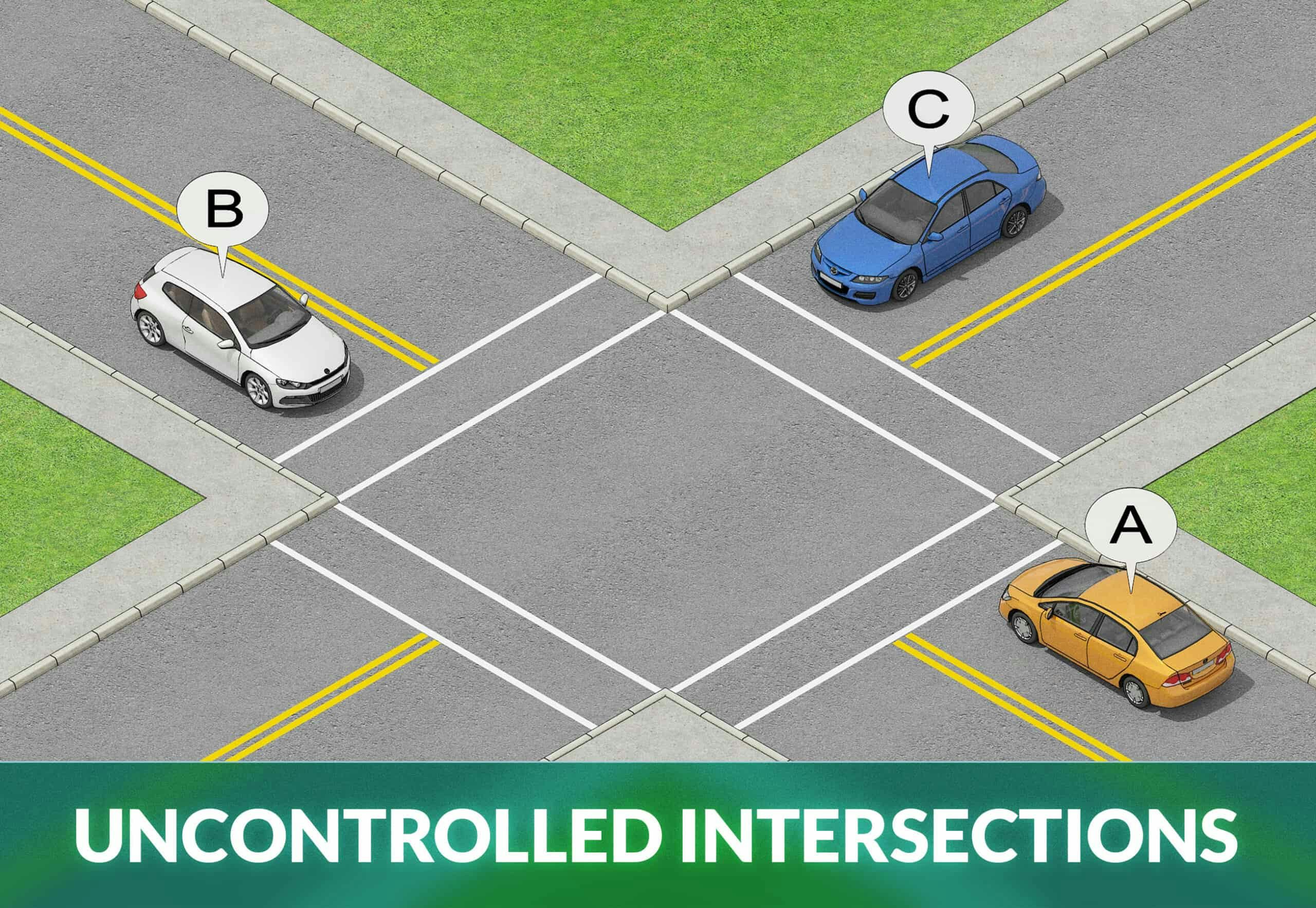
Priority at Uncontrolled Intersections: Right-Of-Way Rules
What is an Uncontrolled Intersection?
An uncontrolled intersection doesn’t have any traffic control systems to help determine the right-of-way, such as stop signs, yield signs, pavement markings, traffic lights, or other authorized persons directing traffic.
When there are no traffic signs or traffic signals to indicate who should proceed first, you must drive with caution and use the basic right-of-way rules to determine who must yield the right-of-way. The right-of-way at an uncontrolled intersection is generally determined by road positioning, who came first and where each driver intends to go.
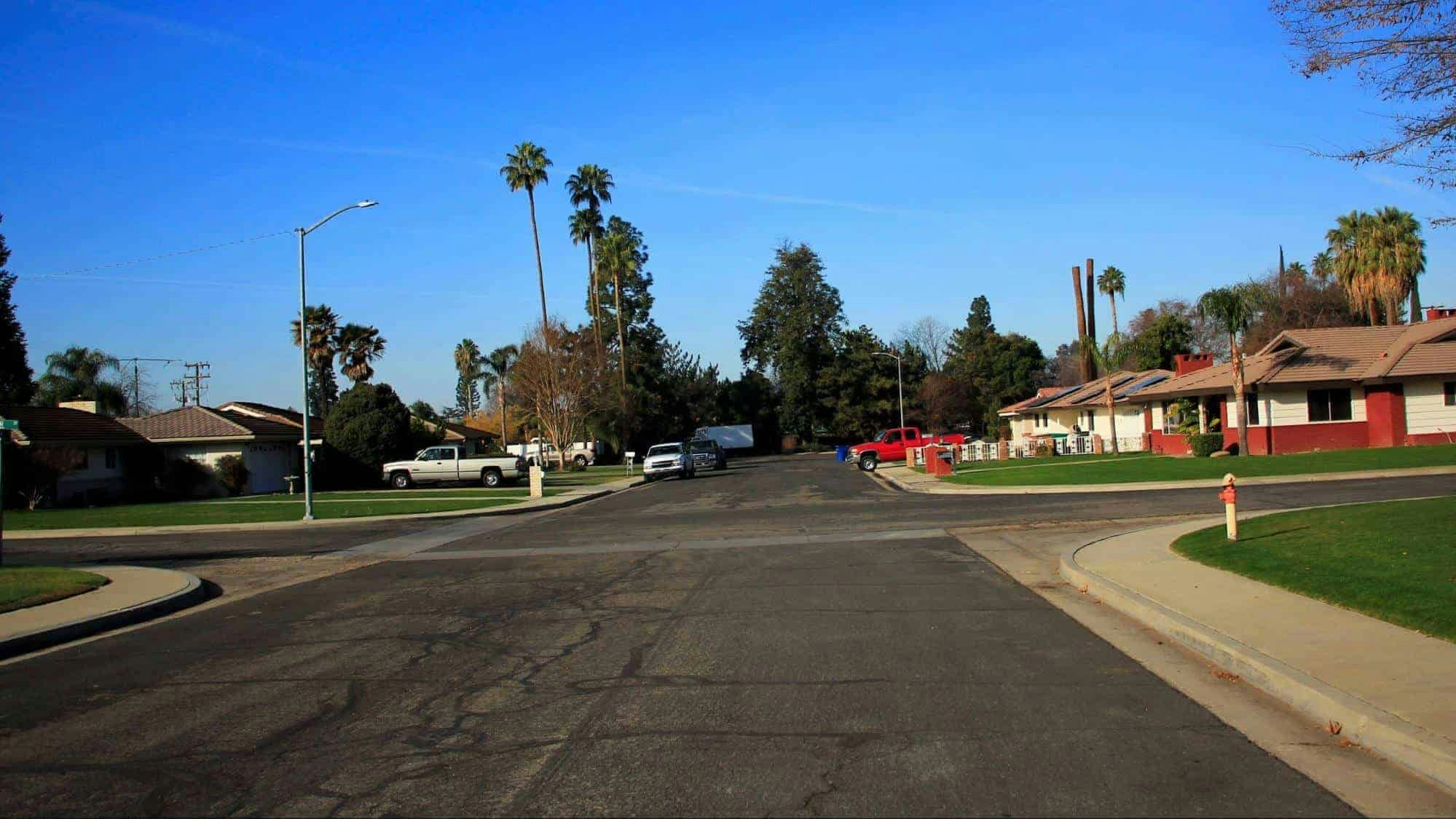
What Does Yielding the Right-Of-Way Mean?
Yielding the right-of-way to another vehicle or pedestrians means that you must slow down or stop to let them pass.
Right-of-way rules at uncontrolled intersections are designed to allow vehicles to move in a predictable way in all situations where their paths cross each other. You aren’t required to stop at an uncontrolled intersection in most states unless there’s other traffic or pedestrians nearby, but you should always slow down as a safety precaution.
How to Enter an Uncontrolled Intersection
There are five right-of-way rules when entering an uncontrolled intersection:
- The vehicle that arrived first has the right-of-way
- If two or more vehicles arrive at roughly the same time, drivers on the left must yield to drivers on the right
- If you are turning left, yield to oncoming traffic even if you arrived first
- Yield to traffic and pedestrians already in or about to enter the intersection
- If both you and an oncoming vehicle are turning left, you can turn without yielding by passing in front of each other
Rule #1 – The vehicle that arrived first has the right-of-way
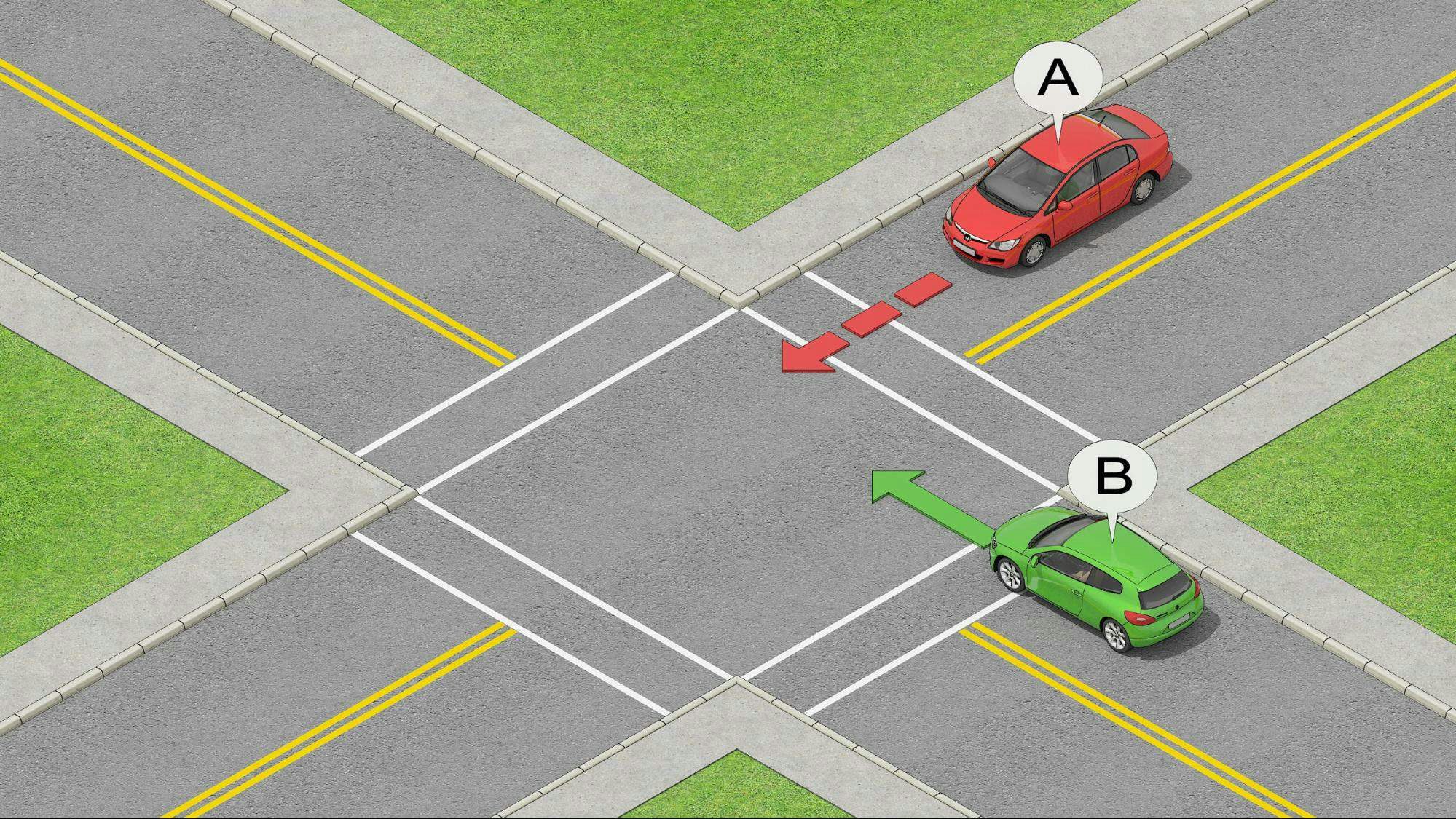
Rule #2 – If two or more vehicles arrive at the same time, drivers on the left must yield to drivers on the right
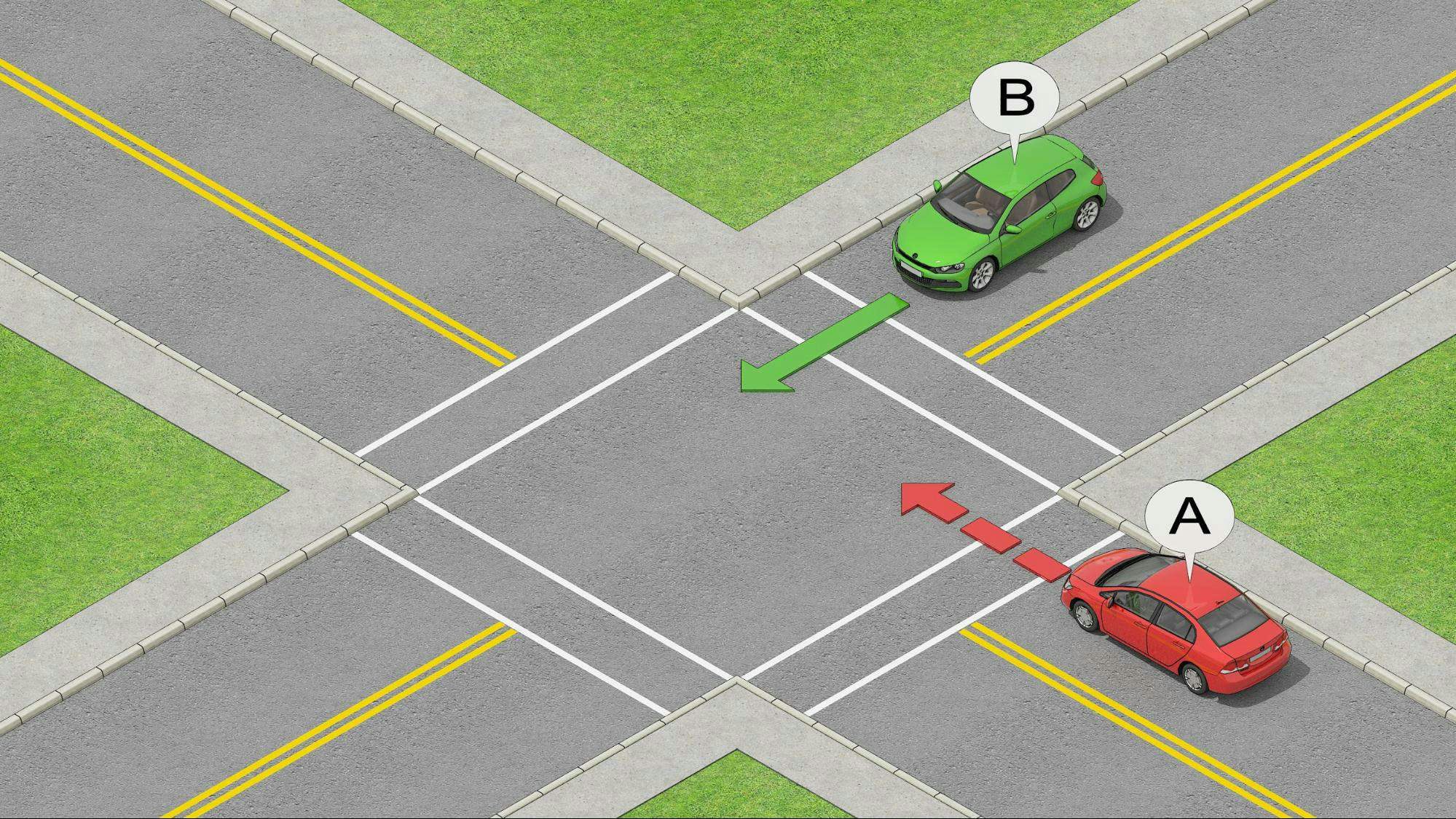
Rule #3 – If you are turning left, yield to oncoming traffic even if you arrived first
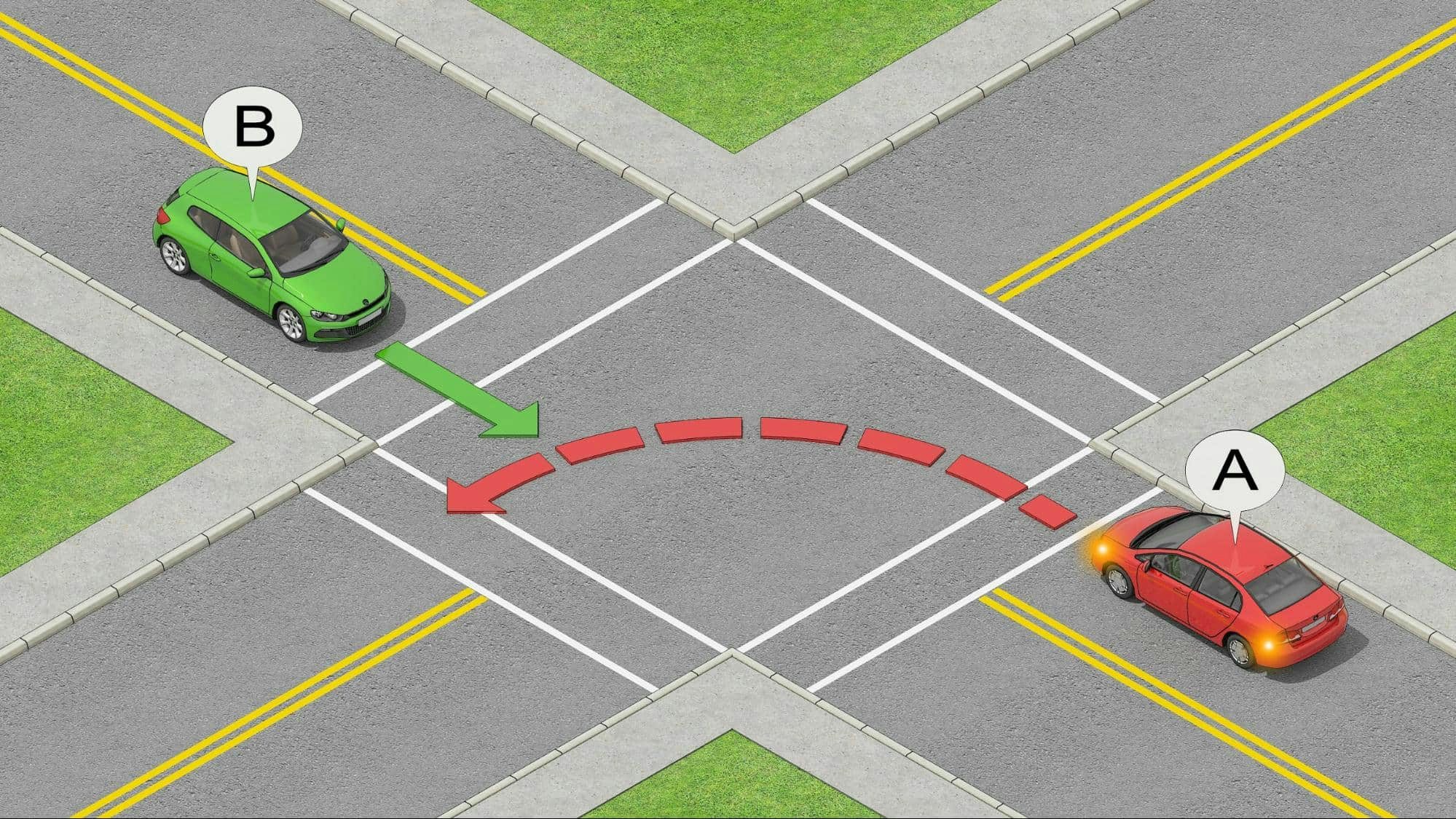
Rule #4 – Yield to traffic and pedestrians already in or about to enter the intersection
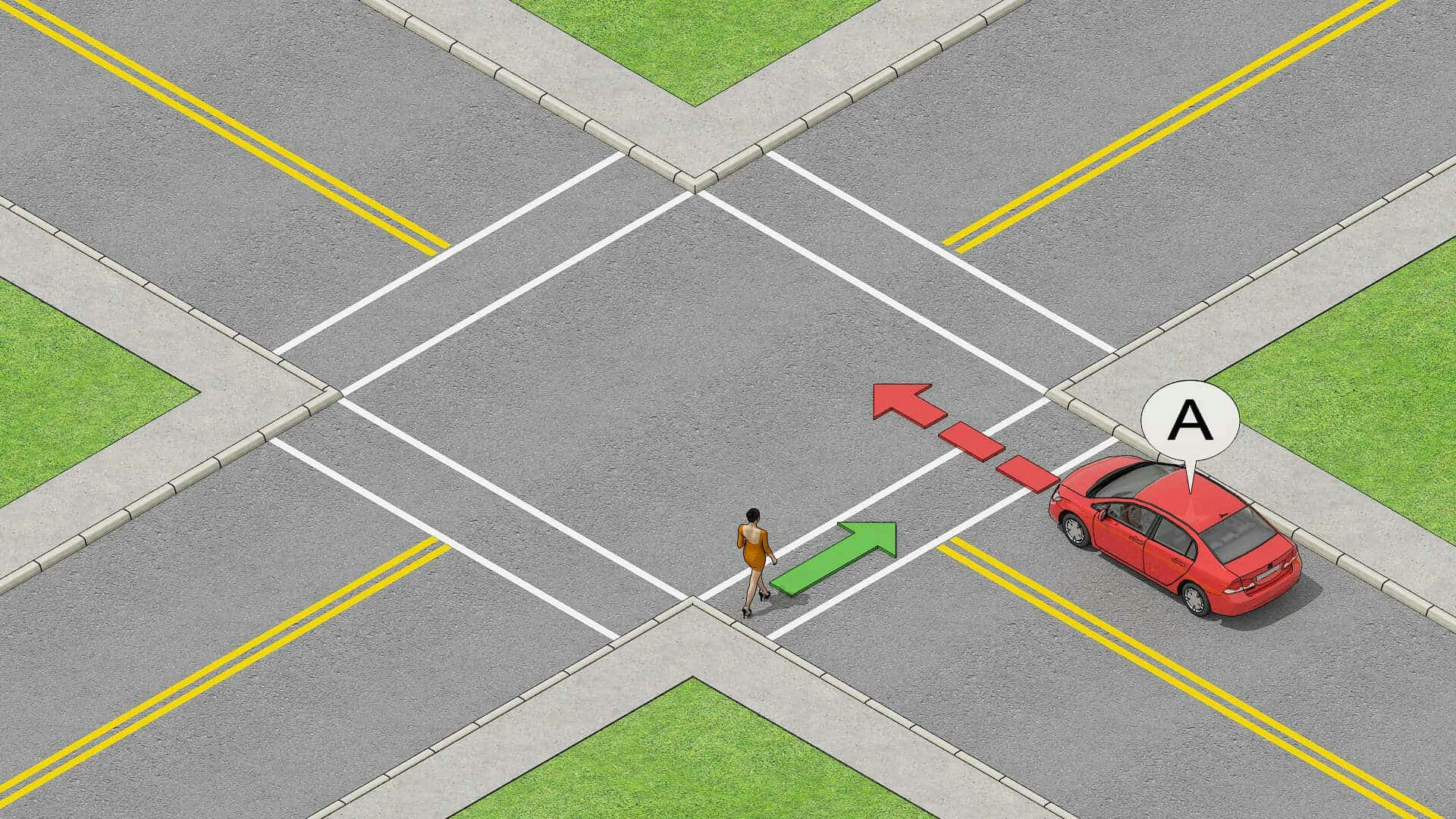
Rule #5 – If both you and an oncoming vehicle are turning left, you can turn without yielding by passing in front of each other
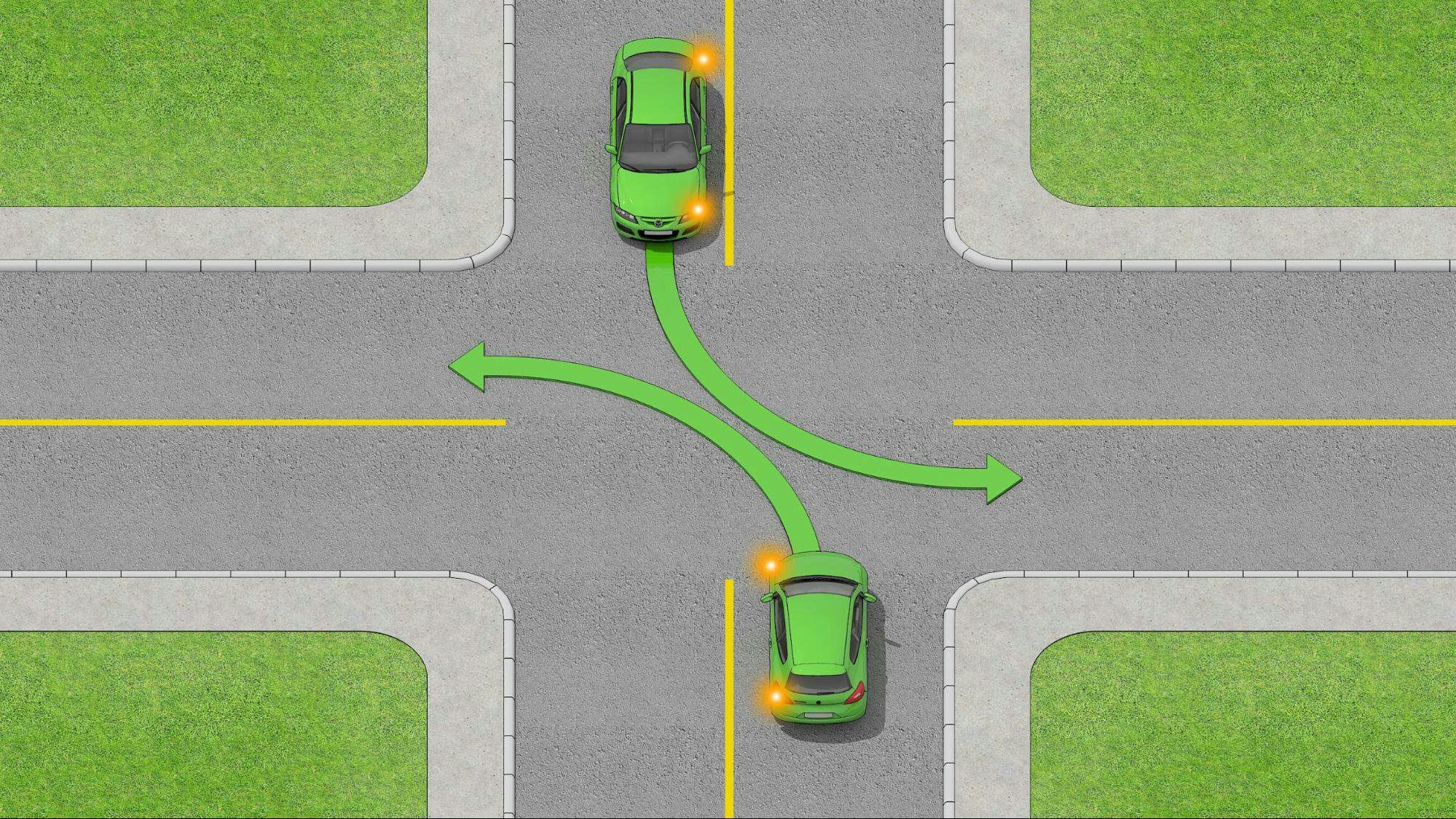
Be Careful at Intersections
Don’t assume that another driver will yield before you see the driver slow down or otherwise indicate he/she is yielding.
The most common mistake is when a driver incorrectly makes a turn at an uncontrolled intersection without traffic signs such as a stop sign, expecting they have the right-of-way when in fact they don’t.
What to Do When Approaching an Uncontrolled Intersection
Always remember – SAFETY FIRST! Here are 5 safety tips to follow when approaching an uncontrolled intersection:
- Slow down to an appropriate speed so you have time to stop if necessary
- Scan the nearby area for pedestrians and vehicles – remember that pedestrians are harder to see and can be hidden from view behind objects or vehicles
- Yield the right-of-way to traffic already in the intersection
- Yield to other traffic according to the basic right-of-way rules
- Proceed through the intersection when safe
What are Uncontrolled T-Intersections?
T-intersections are where two roads meet and one of them ends. The general ‘right-of-way rules don’t apply to T-intersections. The vehicle traveling on the terminating road (the road that ends) must yield to all traffic and crossing pedestrians on the through road unless otherwise signed.

600+ exam-like questions and practice tests
Easy summarized DMV handbook
America’s #1 driver’s ed app with a 95.8% pass rate
Recommended articles
Ace your DMV test, guaranteed
Want to Be the Top School in Your Area?
- Simple & automated admin
- More time for teaching
- #1 learning materials for students


